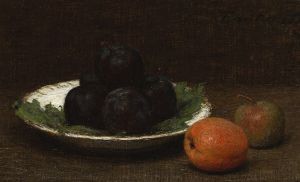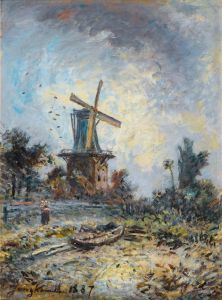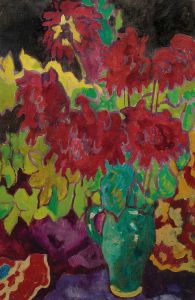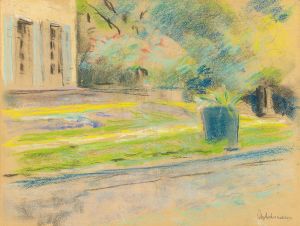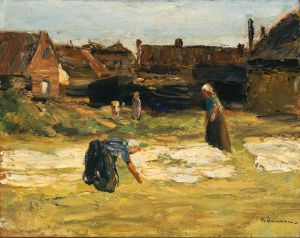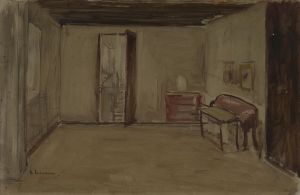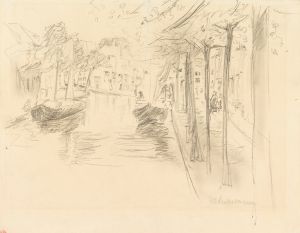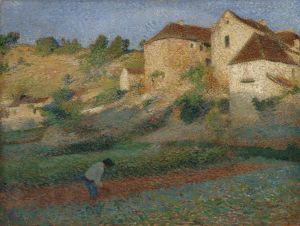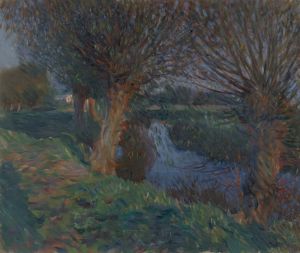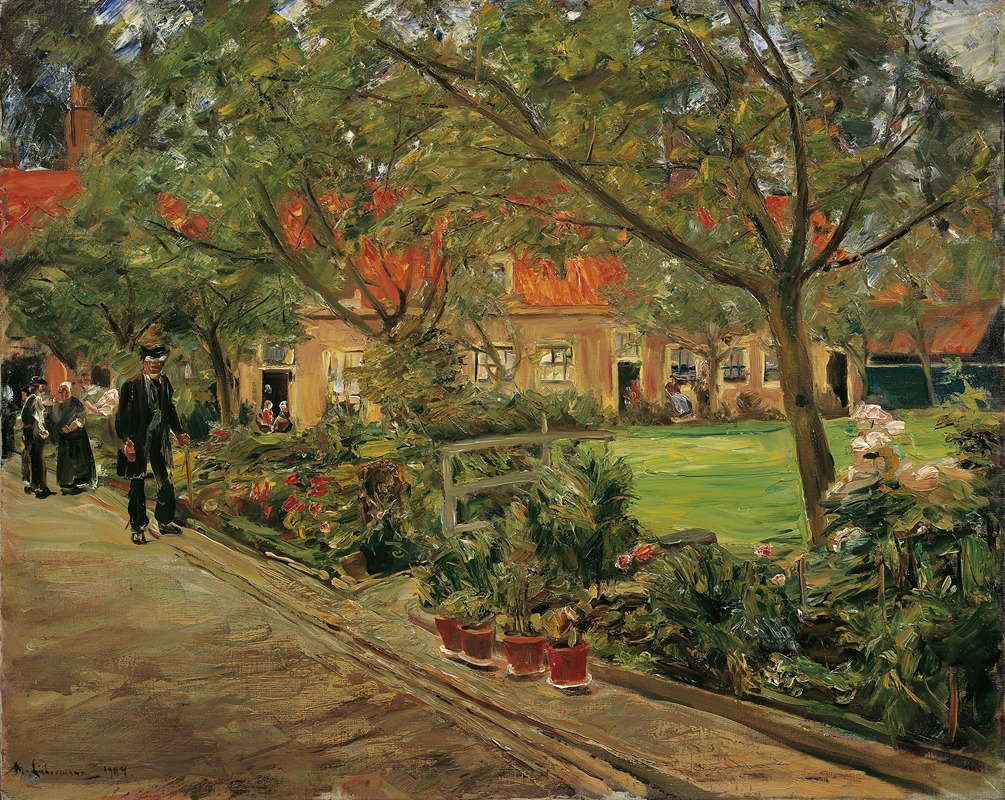
Spitalgarten in Edam
A hand-painted replica of Max Liebermann’s masterpiece Spitalgarten in Edam, meticulously crafted by professional artists to capture the true essence of the original. Each piece is created with museum-quality canvas and rare mineral pigments, carefully painted by experienced artists with delicate brushstrokes and rich, layered colors to perfectly recreate the texture of the original artwork. Unlike machine-printed reproductions, this hand-painted version brings the painting to life, infused with the artist’s emotions and skill in every stroke. Whether for personal collection or home decoration, it instantly elevates the artistic atmosphere of any space.
"Spitalgarten in Edam" is a painting by the German artist Max Liebermann, a prominent figure in the Impressionist movement and one of the leading painters of the Berlin Secession. The artwork depicts a serene garden scene in the Dutch town of Edam, known for its picturesque landscapes and historical charm. Liebermann, who was deeply influenced by the naturalistic and plein air painting traditions of the Netherlands, frequently traveled to the region during the late 19th and early 20th centuries. His visits to the Netherlands played a significant role in shaping his artistic style, which often focused on capturing the interplay of light, atmosphere, and everyday life.
The painting is characteristic of Liebermann's mature style, which combines loose, expressive brushwork with a keen observation of nature. In "Spitalgarten in Edam," Liebermann portrays a tranquil garden setting, likely part of a hospital or charitable institution, as suggested by the term "Spital" (a German word for hospital). The composition features lush greenery, dappled sunlight, and a peaceful ambiance, reflecting Liebermann's interest in depicting quiet, contemplative moments in ordinary settings. The work exemplifies his ability to convey the subtleties of light and shadow, a hallmark of Impressionist techniques.
Max Liebermann's connection to the Netherlands was not only artistic but also personal. He admired the Dutch Golden Age painters, such as Frans Hals and Rembrandt, and their influence is evident in his approach to portraiture and genre scenes. Liebermann's frequent visits to the Netherlands allowed him to immerse himself in the country's rural and urban landscapes, which became recurring themes in his oeuvre.
The exact date of "Spitalgarten in Edam" is not definitively documented, but it is believed to have been created during one of Liebermann's trips to the Netherlands in the late 19th or early 20th century. The painting reflects his broader interest in capturing the harmony between human activity and the natural environment, a theme that resonates throughout his body of work.
Today, Max Liebermann is celebrated as one of Germany's most important Impressionist painters, and his works are held in major museums and private collections worldwide. "Spitalgarten in Edam" stands as a testament to his enduring fascination with Dutch landscapes and his mastery of light and atmosphere.





